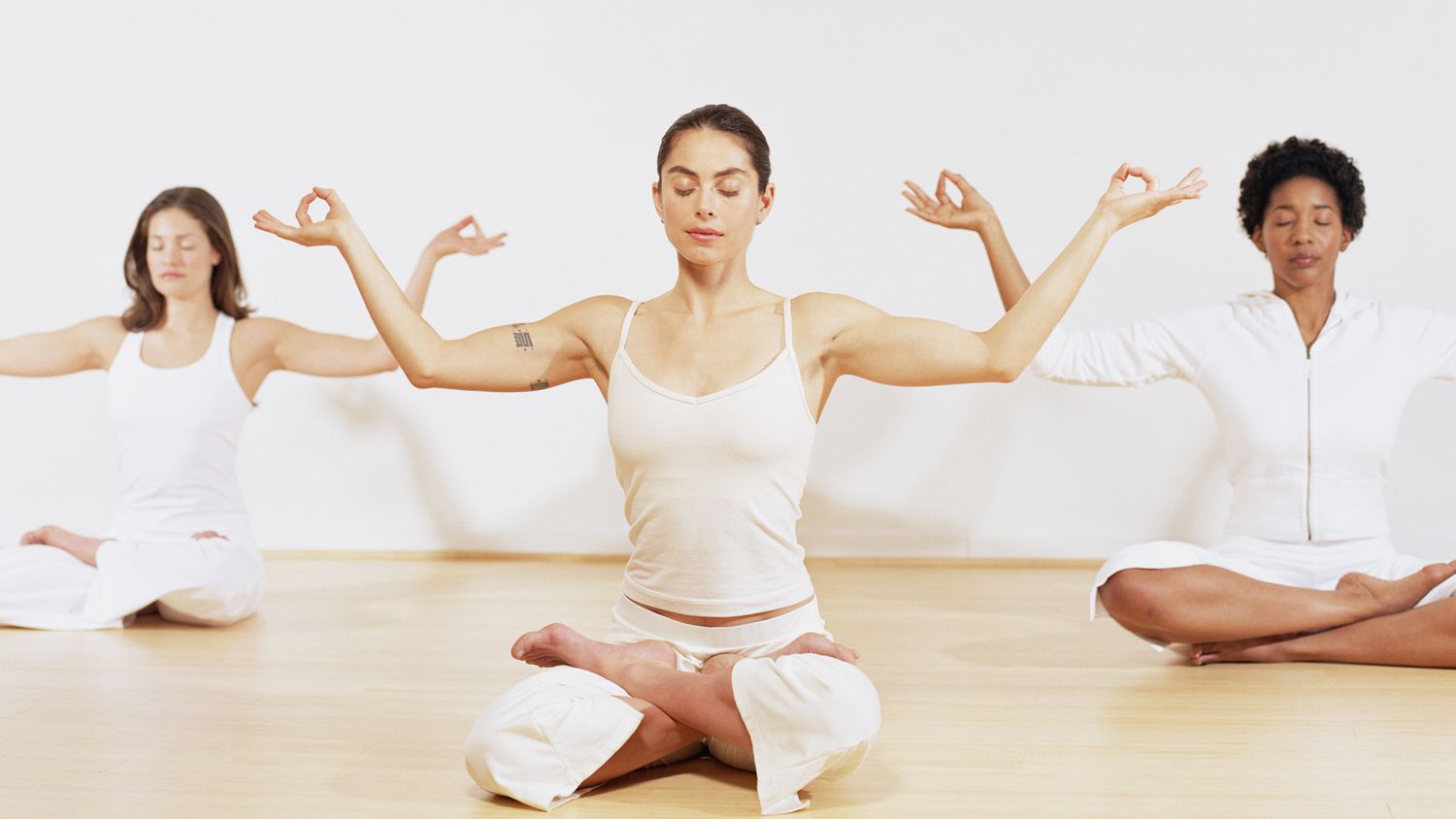In the Principles of Yoga, you learn the proper techniques for asanas and breathing. Asanas help strengthen the body and make it more flexible, and breathing properly is essential for the wellbeing of your mind and soul. It also helps you to control your emotions. Once you understand the principles of Yoga, you will be able to apply them to your life. This guide is a great place to start. It can help you understand why yoga is so beneficial for your mind and body.
The book covers all of the fundamentals of yoga, including the Hatha Yoga Pradipika and the Gherand Samhita. It also goes into details on astanga yoga, the Shatkarma process, and the benefits of meditation. It contains references to the Yoga Sutra by Patanjali, as well as the Hatha Yoga Pradipika, Shiv Samhita, and Gherand Samhita. The book explains the history of yoga as well as the benefits and practices of each type.
The Asanas, or poses, are gentle stretches that increase circulation, increase flexibility, and tone the nervous system. Yoga poses are best performed slowly and gently to prevent strain or spasms. Asanas are also designed to calm the mind, allowing you to focus on your goal. It also improves your posture, which means a stronger body and healthier muscles. In addition, asanas help you feel more relaxed, which improves your mood.
Principles of Yoga: Proper exercise and breathing
Proper exercise and breathing is one of important principles of Yoga. Yoga teaches that proper exercise is important for maintaining flexibility and lubrication of the joints. Exercise also increases circulation and stretches muscles, resulting in better posture and a more balanced body. Unlike other types of exercise, yoga promotes slow, steady movements to avoid the accumulation of lactic acid and fatigue. Proper breathing is essential as it connects the body to its energy battery, or Solar Plexus.

Asana are generally performed on an inhalation, because it allows you to expand your chest and abdomen. The same goes for exhalations, as holding your breath after an inhalation will only prolong the effect of your inhalation. A relaxed chest and abdomen are less resistant to movement than a fully expanded chest. This means that forward bending, if done properly, can be safely performed on an exhalation.
Principles of Yoga: Focus on positive thinking
Many advanced yogis do not find the concept of supernatural powers fascinating. However, their practice of positive thinking can propel them to new heights. While the concept of positive thinking may sound a bit unrealistic, it’s not the end of the world. In fact, the practice of positive thinking in yoga can help you overcome negative thought patterns and transform your perception. Here are some ways to practice this powerful technique.
One method to practice positive thinking is to make a gratitude list for the things that you have in life. You can even try actively turning negative thoughts into positive ones. Whenever you are faced with a stressful situation, remind yourself that you’ll emerge stronger than before. Try to smile more and take time to reflect on your situation. This practice will help you feel more content and centered. However, practicing positive thinking during stressful periods can be challenging, but it’s worth it in the end.

Practicing Yoga daily can also help you cope with life’s daily stresses. It’s not just about stretching, but also eating healthy and exercising. It can even help you cope with tough times in a better way. In fact, if you do it regularly, it’ll become a part of your life. As you practice yoga, it’ll become a natural part of your routine. You’ll find that your mind will naturally settle into a positive state of mind and help you manage your daily stresses.
Principles of Yoga: Meditation
Meditation is a practice of training your mind to focus on an activity, object, or thought. It helps to develop focus and awareness so you can enjoy greater mental clarity and emotional peace. The process can be challenging, but it is worth it. Here are the benefits of meditation. Meditation improves mental clarity and reduces stress. Meditation is a powerful tool to help improve your life. Here are three of the most important benefits of meditation. Learn the most effective techniques to achieve greater mindfulness and peace of mind.
First, learn to focus on different parts of your body. Focus on one area for a while, and then move on to the next. You can also sequence parts of your body, lingering on each sensation and eventually coming back to the last part you remembered. During meditation, you should also be mindful of sounds and emotions in your environment. It is important to maintain a relaxed and focused state, and you should aim for a steady and consistent practice.

The next benefit is the reduction of negative emotions. Meditation can improve your self-esteem and reduce symptoms of depression, anxiety, and post-traumatic stress. It is an ancient practice that dates back thousands of years. It has been associated with religious practices and spread through Asia. During the 20th century, it spread outside Asia. It was popularized in the West during the 1960s and 1970s. During this time, it was often associated with the hippie movement.
Principles of Yoga: Practicing with devotion
Practicing with devotion is essential to achieve lasting spiritual growth. This practice requires creative engagement and sustained dedication. When the three components of devotion do not function harmoniously, the practice will be fruitless and erratic. The key is to cultivate a daily routine in which the practices are lived with great joy. Listed below are the benefits of Practicing with Devotion
Practicing with devotion involves a variety of actions that are ritualized and used to align oneself with a particular spiritual power. The action is short and ritualized, and it can be a verbal or nonverbal expression. This type of devotion is often associated with rituals such as chanting, circling, or walking. Regardless of the form, it is beneficial to practice with devotion to gain insight into the true nature of your innermost self.

Creating a beautiful Mandala is a powerful meditation tool and can help you connect with your spirituality. You can even create your own altar with found objects or arranged leaves. During your meditations, allow your eyes to move over the artwork and bring your mind into a relaxed state of focus. Then repeat until you have established a daily routine of devotions. If you feel ready, you can begin reading more in depth and making it a habit.
Although attending temples is essential to deepen spiritual practice, daily practice is the key to deep spiritual living. Devotions, such as the Dharma Sutra, can be a vital guide to daily actions. Further, daily devotional readings can provide clarity in your decisions and clarify your daily practices. It is important to practice daily devotional practices, as this helps to clarify the meaning of your actions and help you achieve greater spiritual well-being.
Principles of Yoga: Purpose of Yoga
The purpose of yoga is to cultivate a union with the Self. The physical aspect of yoga is beneficial for one’s health, but its primary purpose is to cultivate an inner connection. The goal of yoga is to achieve a peaceful state of mind and body. Its benefits are varied, depending on the style of yoga. For example, hatha yoga can help one cultivate a centered mind. However, asana alone isn’t sufficient to reach spiritual enlightenment.
The advanced practices of yoga promote physical and emotional relaxation. It improves overall health by preventing illness and easing everyday aches and pains. It also improves sleep by giving the body and mind time to rejuvenate. It also lowers blood pressure and increases the blood flow to the intestines. The practice of yoga has also been linked to improved fertility. Yoga encourages relaxation, which is important in the modern world.

The first obvious benefit of yoga is increased flexibility. While you may not be able to touch your toes or complete a backbend on your first class, you will begin to loosen up and eliminate any aches and pains. Tight hips and hamstrings can cause pain in the knee joint. Inflexibility can also cause poor posture. Practicing yoga improves your posture and allows your body to function at a higher level.
There are many forms of yoga. Some styles are fast-paced while others are slow-paced. Slow-paced styles, such as yin yoga, are a great way to increase your flexibility and circulate your blood to your joints. In addition to the physical benefits of yoga, many people enjoy the mental benefits of practicing yoga. This includes mental clarity. The goal of yoga is to help the individual achieve physical and mental balance, which will increase their overall well-being.
YOGA aims to achieve optimum health

YOGA has several benefits, including reducing stress, enhancing concentration, and increasing circulation. The practice of yoga can also reduce the likelihood of heart attack and stroke. These benefits have led Western science to begin researching yoga. These studies have shown that regular yoga practice can improve health, reduce the risk of illness, and help people deal with aches and pains. Understanding these benefits can help people be more motivated to practice yoga.
YOGA can improve immune function. Practicing certain postures helps the body to drain lymph. Lymph, a viscous fluid that contains immune cells, helps the body fight infection, destroy cancerous cells, and eliminate toxic waste products. Many people who practice yoga regularly benefit from long-term flexibility. While flexibility is an obvious benefit of yoga, it also promotes spinal health. If you suffer from osteoarthritis or arthritis, yoga can help you avoid those symptoms.
Principles of Yoga: Flexibility
Practicing yoga increases flexibility. It may not be the ideal exercise for people who are not flexible. However, there are many different forms of yoga that can be practiced by people of all fitness levels. Generally, yin yoga poses target tight muscle groups and are gentle on the body. Yoga postures should be held for at least three minutes, and sometimes longer, using props to support the body. Holding the posture for longer than three minutes will allow the targeted muscle group to relax.

In addition to improving flexibility, yoga also helps correct muscle imbalances. This allows a person to move freely, minimizing the risk of injury. Stretching also helps maintain a more open range of motion, thus reducing the risk of muscle aches. In addition to improving flexibility, yoga can improve posture, ease muscle tension, and increase overall health and well-being. Aside from the physical benefits, yoga also helps improve mental and lymphatic health.
It reduces blood pressure
Yoga classes usually consist of meditation, breathing exercises, and poses. A recent study focused on these exercises, and specifically the breath. The study involved a group of people with high blood pressure who were divided into three groups: one followed a class led by Misra, the other followed an instructional DVD or video, and the third group did not participate in any yoga classes at all, and continued to take their blood pressure medications.

The researchers found that participants who practiced yoga had significantly lower systolic and diastolic blood pressure than those in a control group. These classes also included breathing and relaxation exercises, which significantly reduced blood pressure. In addition, the participants who took the classes experienced a decrease in diastolic pressure of nine millimeters, while the others had no change. The researchers believe that these improvements are important and that yoga could be a useful adjunct for those with hypertension.
It facilitates constructive change
The practice of yoga fosters a holistic perspective, as practitioners are reminded that their body, breath and mind are part of the whole world. As a result, they learn to adjust their behavior in ways that help their community and environment. They develop an attitude of calm environmental stewardship. Ultimately, this helps them make better decisions that will lead to positive change. And that is exactly what yoga does.
The practice of yoga encourages the participant to accept their moment-to-moment experiences rather than pushing the body past its capacity. This is particularly important for cancer patients, who often experience high levels of stress as a result of unpleasant symptoms. Yoga also encourages healthy, mindful behaviors toward others. The physical exercises in yoga are designed to exercise every muscle, nerve and gland in the body. As such, it is possible to address the tension in any organ or joint through the practice of yoga.

While yoga can be a valuable way to reduce stress and anxiety, it should not be used to replace a mental health professional’s treatment. If you suffer from anxiety disorder, you should consider a more comprehensive treatment approach, such as psychiatry. Yoga can be a complementary form of treatment, and can also be modified to fit your needs. For the most complete benefits, it is best to start with a yoga class with a qualified instructor
It heals aches and pains
If you’ve ever heard the term “yoga heals aches and pains”, you may be surprised to know that this ancient practice is also very effective at treating these conditions. Yoga is a scientific methodology that aims to unite body, mind, and spirit in a holistic manner. This bonding, according to yoga experts, is said to have physical and mental benefits and can even take a person to the next level. That’s why many back pain sufferers incorporate yoga into their treatment program.
During yoga classes, a person’s muscles and tendons gradually stretch, which relieves tension and relieves pain. Regular yoga practice is also beneficial in reducing pain from progressive arthritis. Yoga is both a spiritual and physical activity. The breathing exercises that yoga practitioners practice help users learn how to relax their body on command. Many of these breathing techniques can be performed outside of yoga classes, too, which can make them highly effective for relieving chronic pain

A good way to start healing aches and pains is to find an appropriate yoga practice. For IBS, yoga can help calm the nervous system and the irritated digestive tract. Whenever possible, choose postures that are easy to do. Avoid challenging poses or those that require too much physical strength. In addition, try to focus on breathing smoothly to avoid straining your body and reinforcing stress. If possible, include a relaxation pose at the end of your yoga session to help your body relax.
You can get proper training of yoga , to learn and apply the Yoga Techniques. To know about our Yoga Training programs, please visit our following webpage.








